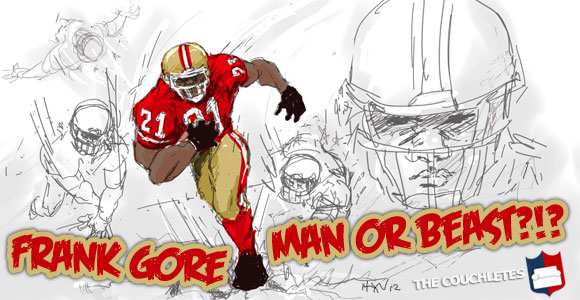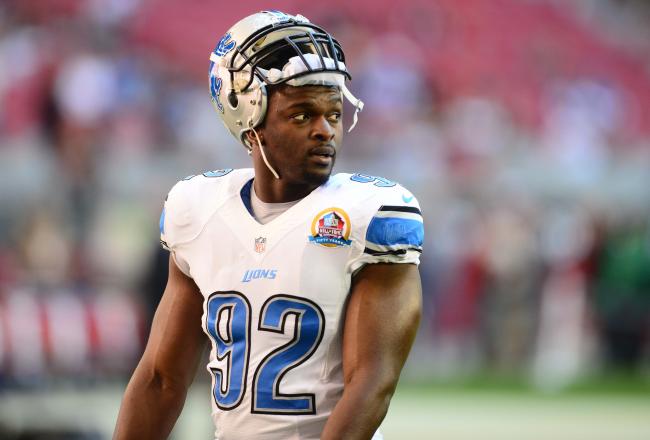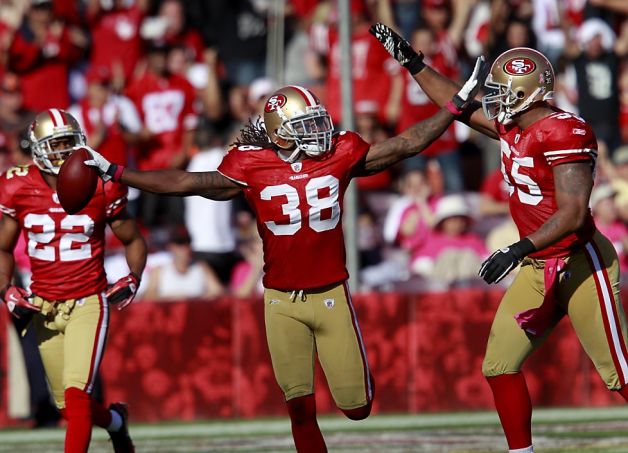
Photo Credit: (Hoa Nguyen/hoatheartist.com)
Now that we’re a few weeks out from the greatest disappointment of the football season, for a Niner fan anyway, I felt it was time to reflect on the under-appreciated, undervalued, and certainly overlooked greatness of Frank Gore.
After a standout freshman year at the University of Miami, Gore tore the ACL in his left knee during spring ball of his sophomore season, and then the ACL in right knee the following year. While he came back strong from each injury, I’m sure he wasn’t sure what to think entering the NFL draft. Optimism about going high, even though he knew he was worth it, probably wasn’t one of those emotions.
Gore entered the league in 2005 as a third-round choice out of Miami, being passed over largely, if not entirely, because of his injury history. Who was drafted ahead of him? It’s a great list that includes guys like Ronnie Brown, Cedric Benson, Cadillac Williams, J.J. Arrington, and Eric Shelton. Yeah, I have no idea who Eric Shelton is either. And a few that went after him included the likes of Vernand Morency, Ryan Moats, Maurice Clarett(!!) Marion Barber III, and Brandon Jacobs.
Someone tell me how many of those guys are still on active rosters? Anyone? Ronnie Brown (3rd down back for the Chargers), Cedric Benson (Current free agent formerly of the Packers in 2012).
Yep. That’s it. Two guys still on active rosters following this last season.
What is most telling about the called names ahead and behind Gore is how few of those guys went on to do anything meaningful, let alone whether they’re still in the league. You can argue Cedric Benson has had the best career among those preceding Gore’s selection, but that’s not really saying much. And the guys after him, well, the only two that did anything at all are Barber and Jacobs, with the latter serving as the No. 3 or 4 running back on the San Francisco 49ers roster in 2012 behind the starter, Gore.
From a recent Jim Trotter piece on SI.com there was this:
His primary goal used to be finishing with more career rushing yards than the running backs selected ahead of him in 2005 … He not only has done that — his 8,839 yards are 2,822 more than Benson — but his six seasons of at least 1,000 yards rushing are equal to the combined total of the aforementioned five.
As fans and pundits, we typically first judge a player on his draft class. Who did he come out with? How does he stack up? It’s clear from his draft class that not only has Gore been the most durable and healthiest, he’s been the most productive of any of these guys. If they’re good, and Gore is, we then expand that to the broader archives of running back greats.
So where does he stack up with them? Let’s start with other active greats.
Since entering the league in 2005 all the man has done is produce. He simply gets it done. In his eight seasons he’s failed to rush for 1,000 yards just once, this while a member of a team and an offense that ranked near the bottom in many key statistical categories and cycled through offensive coordinators like a woman would through dresses when preparing for a first date. It was a disaster, but through it all Gore was a workhorse. His 8,839 yards rushing and 51 TDs over the last seven seasons (good for the franchise’s all-time records in each category for a RB) trail only Adrian Peterson (8,849 yards and 76 TDs) and Steven Jackson (10,135 yards and 56 TDs) – the former achieving these stats in one year fewer than Gore and the latter in one additional. Gore achieved this while missing 12 regular season games of 128 possible; so almost a full season missed.
The general consensus seems to be, if you become a 10,000-yard rusher for your career the likelihood of receiving a call from the Hall is much greater than if you don’t. Clearly Frank will get to that number, but how much longer does he have? At the age of 29 he’s supposed to be running out steam, at least based on running back standards, but the strange thing many people noticed in 2012 was that Frank typically started slow and got stronger as the game went on. With the addition of LaMichael James splitting backfield duties with Gore, he has the potential to have 3, 4, hell, maybe even five more years if he wants it and barring injury.
Let’s assume he plays four more years and is able to rush for 1,000+ in each of them. If he can do that, even without that final fourth year, that would put him right on par with the career rushing yards of Hall of Famers like Marcus Allen, Marshall Faulk, Jim Brown, Tony Dorsett, and Erick Dickerson.
So what am I getting at?
Well, we all see it. The “A” players get the big money. They get all the press. They get the endorsements. They get the reality shows, if they want them. They seemingly get all of the goods, however we’re defining “goods” in this moment. But where’s Frank? Frank’s in San Francisco working his ass off so he can post another 1,000-yard season. Frank’s off not getting arrested for doing something stupid.
Maybe he doesn’t want all of the attention that comes with being a star running back. Maybe he doesn’t even view himself in that way. But I’ll tell you what, with the current success of the 49ers, almost the same exact roster and coaching staff coming back for another year, the future is bright. If he doesn’t want the attention, that’s fine by me, because I know he’ll garner plenty of it on the field as he rips through defenses for another 1,200-yard season like he did this year during the Niner’s run to the Super Bowl.
Shakespeare once said, “Some are born great, some achieve greatness, and some have greatness thrust upon them.”
We all know where Frank Gore falls here. It’s time to start acknowledging.
By Ryan Lack
Follow Ryan on Twitter at @ryanlack
You can contact Ryan at ryan@thecouchletes.com



